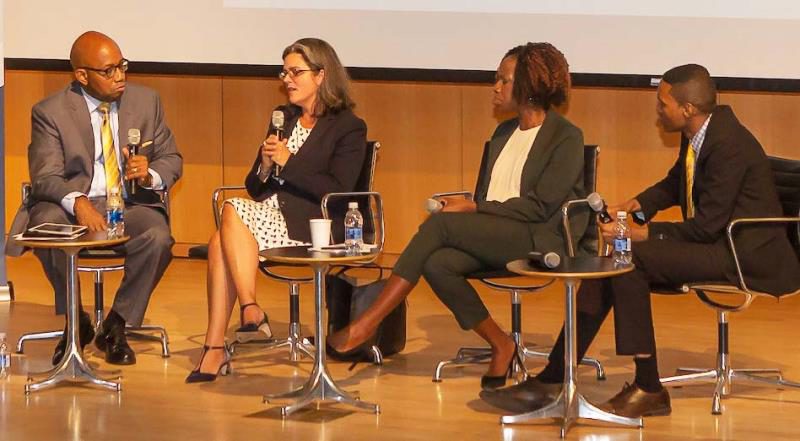HUD Report Underscores Success of RAD Program

A report recently issued by the U.S. Department of Housing and Urban Development (HUD) shows that the Rental Assistance Demonstration program (RAD) is on track nationally to accomplish its goal of attracting substantial new capital to stabilize the physical and financial conditions of public housing properties.
Authorized by Congress in 2012, RAD allows public housing authorities to shift a development’s funding source from public housing appropriations to the Section 8 Housing Choice Voucher Program. NYCHA’s implementation of RAD, called PACT (Permanent Affordability Commitment Together), leverages additional investment to rehabilitate public housing units and ensures that residents have safe, healthy homes.
Following HUD approval last year, NYCHA moved forward with upgrading 1,400 apartments at Ocean Bay (Bayside) in the Rockaways through the RAD program. Following a series of resident engagement meetings, a request for proposals reflecting community input was released in February, and a development team was selected in July. In June, NYCHA submitted an application for an additional 5,200 units for the RAD program, which is awaiting HUD’s approval.
Upgrades at Ocean Bay (Bayside) will include:
• new unit interiors, hallways and common areas,
• building systems,
• roofs, facades, building entrances,
• a new security system, and
• community center renovation.
The site will also receive flood mitigation and energy efficiency measures.
“This report underscores the value of RAD as an effective, flexible tool for larger public housing authorities, like NYCHA, to rehab our aging housing stock and improve the quality of life for thousands of families,” said Chair and CEO Shola Olatoye.
“This study reinforces that the Rental Assistance Demonstration program can leverage private investment at a scale that will have a meaningful impact on NYCHA’s housing portfolio,” said Holly Leicht, HUD regional administrator for New York and New Jersey. “The major capital improvements and upgrades RAD makes possible will ensure that the next generation of New Yorkers have access to quality affordable housing and the opportunities that housing affords.”
PACT includes a set of principles identified by a number of resident leaders and advocacy groups in partnership with the Authority to guide RAD implementation in New York City. Fundamental to the design of RAD, current and future residents are guaranteed the same rights and protections as those of public housing residents. Further, HUD requires that a public or non-profit entity must always maintain a controlling interest in the property, thus ensuring the properties’ long-term public stewardship.
The HUD report also highlighted that some public housing properties with more serious capital needs will not be able to be sufficiently improved without additional subsidy, which is why HUD is also proposing to provide $50 million to help local public housing agencies finance the deeper recapitalization of tens of thousands of units of public housing.
“The Rental Assistance Demonstration is attracting substantial investment in a budget environment where public dollars simply can’t keep pace with the growing backlog of capital needs facing our public housing authorities,” said HUD Secretary Julián Castro. “As we continue to evaluate this demonstration, it’s already clear that RAD is helping to preserve an important piece of our nation’s affordable housing stock.”
Phase II of HUD’s evaluation will focus on how successful RAD is at improving the physical and financial conditions of federally assisted properties and how tenants have been impacted.








